578 DOGS ON THE MOVE
DOGS ON THE MOVE
by David Hancock
 If man is the most successful mammal on the planet, then, dog, man's closest animal companion, is the second most successful. Dogs have changed history, allowing for example early farmers to protect their livestock from predators, primitive hunters to obtain meat for the table and facilitate travel in Arctic conditions. In his Dogs: A Historical Journey (Howell Book House, 1996), Lloyd Wendt writes: 'The earliest evident pattern of human and dog migrations and partnership activity began in southeastern Africa, extending to Lakes Turkana and Omo in Ethiopia and the Nile tributaries, the Nile itself, and may have reached past the deserts of Sudan...'. In his Dogs through History (Denlinger, 1987), Maxwell Riddle writes: 'Asia is a huge land mass, with high mountains separating fertile valleys. Such valleys were ideal for developing dog breeds. Their comparative isolation and highland stock grazing areas challenged the people within to produce dogs for specialized purposes.'
If man is the most successful mammal on the planet, then, dog, man's closest animal companion, is the second most successful. Dogs have changed history, allowing for example early farmers to protect their livestock from predators, primitive hunters to obtain meat for the table and facilitate travel in Arctic conditions. In his Dogs: A Historical Journey (Howell Book House, 1996), Lloyd Wendt writes: 'The earliest evident pattern of human and dog migrations and partnership activity began in southeastern Africa, extending to Lakes Turkana and Omo in Ethiopia and the Nile tributaries, the Nile itself, and may have reached past the deserts of Sudan...'. In his Dogs through History (Denlinger, 1987), Maxwell Riddle writes: 'Asia is a huge land mass, with high mountains separating fertile valleys. Such valleys were ideal for developing dog breeds. Their comparative isolation and highland stock grazing areas challenged the people within to produce dogs for specialized purposes.'
In her The Lost History of the Canine Race (Andrews and McMeel, 1996), Mary Thurston writes: 'At its height, Rome was a veritable melting pot of both domesticated animals and people...At the same time, "exotic" dogs continued to arrive from Northern Europe, Africa, and the Middle East. Outcrossed with one another as well as with the more primitive, Neolithic canines still residing in rural parts of Southern Europe, they gave rise to a plethora of new varieties...'. These three quotes provide background to the timeless development of dogs with people, the movement of people with their dogs and the trading in dogs once their value was known. 
Dog-traders have earned themselves a questionable reputation in modern times, but trading in dogs in past times allowed the widespread movement of dogs and a wider appreciation of their usefulness. Dogs accompanied wandering tribes, campaigning armies and migrating peoples, provided they had some use. The game-catchers like the sighthound breeds, the gamefinders like the modern gundog breeds and the flock guarding breeds each had a distinct value to man. The need to control vermin led to the development of the terrier breeds. The need to control sheep gave us the herding breeds. Dogs which excelled in their specialist function have long been extensively traded.
The particular function of each dog not surprisingly led to the development of the physique which allowed the dog to excel in that function. That is why sighthounds have a muscular light-boned build, the terriers a low-to-ground anatomy and the flock guardians substantial size. Sighthound breeds, wherever they were developed, project the same silhouette, display the same racy phenotype. The Azawakh of Mali, the Harehound of Circassia, the Sloughi of Morocco and the Tasy or Taigon from Mid-Asia would never change hands if they didn't look like fast-running dogs. If they didn't possess this anatomical design they couldn't function as speedsters.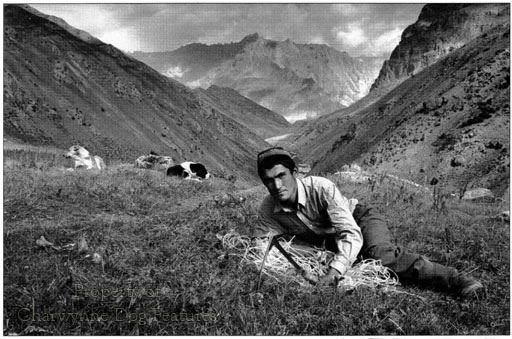
Hunters and sportsmen the world over know that the ability to catch game using speed demanded a very distinctive build. The sighthounds bound; they must have the height/weight ratio, the leg length and the liver-size to sprint. Sighthounds race entirely on liver glycogen, sugar activated from the liver. Sprinting demands long legs and a sizeable liver. The bigger the liver the more sugar can be stored. A sighthound over 65lbs in weight would have a problem through heat storage; their streamlined build allows a greater surface area. We are good at getting rid of excess heat and not very good at storing it. Dogs are the reverse, removing excess heat from their surfaces rather as a radiator gives off heat.
When sighthounds were traded, these technicalities were not known but the radiator-like build, size without weight and long legs meant something to their traders. The most successful sprinters had the build to succeed and were traded and perpetuated. In breeding for appearance only we need to bear in mind those anatomical essentials which made sighthounds what they are: internationally renowned sprinters. An 85lb Borzoi will experience difficulties when running flat out; a Greyhound of any weight with a small liver will have an even bigger handicap. Traders in such hounds couldn't measure livers but they could measure performance.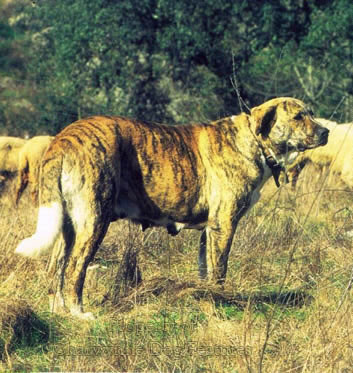
Similar but more perceptible criteria affect the flock guardian breeds. It is forgiveable to believe that such breeds are sizeable because they need to be able to see off wild animals which prey on sheep. But much more important are the bigger stride afforded by size, the ability to carry more fat reserves and store more heat than a small dog and to survive disease, severe weather and the odd accident - big bones break less easily than tiny ones. This is why such breeds possess a similar phenotype; the Estrela Mountain Dog is easily confused with a Slovenian Karst, a Corsican Cursinu or a Caucasian Owtcharka, or a Maremma with a Hungarian Kuvasz. Traders of dogs knew what made a dog effective and more valuable.
Traders in sled dogs made comparable judgements from their experiences. They learned to value economy of motion in their dogs; their gait leading to success, a smooth motion in which their feet hardly leave the ground. The top racing teams cover a mile in just over 3 minutes nowadays. This capability is rooted in the size:weight ratio. The dogs pull by pushing forward and the heavier the dog the greater the energy required to do so. A 50lb Alaskan hybrid husky has evolved as the optimum sled dog. Of course such a dog has to have the right feet, coat and constitution to support its work, but the relationship between height and weight is the key.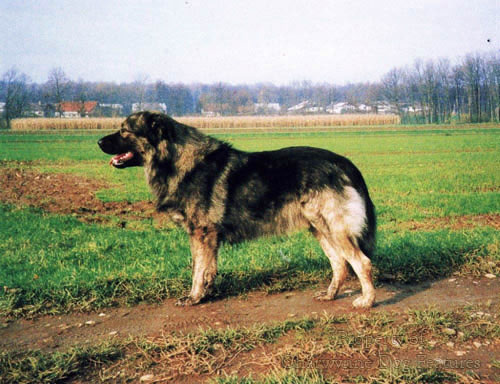
No doubt the show ring will dictate that sled dogs one day will be mainly valued for their coats, flock guardians for their size alone and the sighthound breeds for their sheer skinniness. They will be traded on cosmetic grounds alone and as breeds, not functional creatures based on demanding criteria. This will please the kennel clubs of the world and make veterinary surgeons richer but will not do much for dogs. There is a wanton disregard for hybrid vigour amongst dog breeders and contemporary dog traders have learned that the closed gene pool in recognised breeds has to be respected for commercial success. Breed specific diseases are largely ignored, despite the noble efforts of a few.
I feel some sympathy for responsible breeders of pure-bred dogs in Britain. Unlike mainland Europe our breed clubs have no muscle and little say in the health, breeding rates and rescue systems in their particular breed, If pedigree dogs were registered through their breed club only, a very different scene would emerge. If breeding stock were to be subject to mandatory health clearances, a totally different type of breeder would emerge. At present the written pedigree tells you more about the breeder than the dog! A dog came Best of Breed at Crufts a few years ago when it had been bred from 59 different ancestors out of a possible 62 on a 5-generation pedigree. Bizarrely, this dog became a sought-after sire!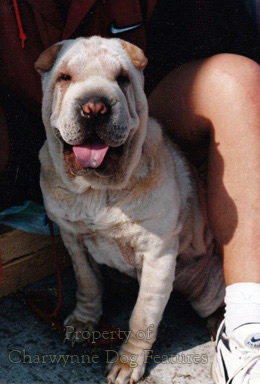
What ever happened to line-breeding! How can any dam's owner put a bitch to such a mish-mash of genes? And yet, the bitches in that breed queued up for a service from the Crufts winner. We can no longer judge so many breeds on their usefulness, but surely that puts even greater emphasis on type and soundness. You only have to read the judges' critiques to see that in some breeds we are in danger of losing both. But what can a knowledgeable honourable breeder do in the current free for all? It costs money to have your stock health-screened, to rescue any displaced pups from your own breeding, to travel to the sire best suited for your line and to keep up with the latest research on your breed.
And, when you have financed all these things, you look in a weekly paper to discover that a breeder who has done none of these things is selling, and registering, pups as if there's no tomorrow. Have we really progressed in Britain from the Victorian street markets for dogs? We seem obsessed by the written pedigree and seem to regard it as some sort of kitemark. The man in the street is gradually seeing through this deceit and, with The Sale of Goods and The Trades' Descriptions Acts, taking action increasingly when metaphorically 'sold a pup'. And that expression didn't come into common usage without reason!
There's a great deal to be done if the world of the pure-bred dog isn't going to lose credibility, slowly but irretrievably. Most purchasers of pedigree dogs are pet-owners; all they want is a dog which lives a long and active life and costs little at the vets. Sadly, in far too many breeds, they are being offered a dog bred purely for appearance without regard for its genetic health, not always adequately socialized and increasingly short-lived. Dogs of virtually unknown genetic health and unverifiable breeding are imported, merely because they are registered with an associate kennel club.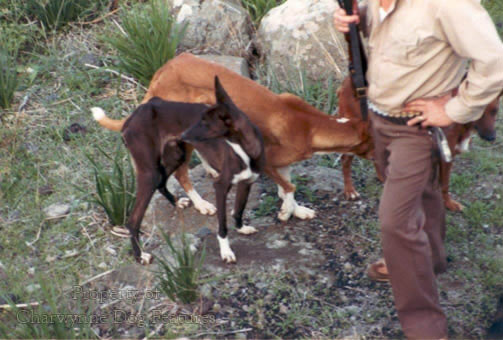
Forty years ago, I saw some heavily wrinkled pups in a Hong Kong street market; their eyes were sore and their general condition pitiful. One was literally tail-less. The local police referred to them as 'Chinese Boxers', regarded them as dogs bred for fighting and stated that they were usually imported, from the mainland, Taiwan or Macao. I was disturbed to discover ten years later that dogs of this type were being imported into the United States as a valuable Chinese rare breed, which 'must be saved'. Now we have the Chinese Shar Pei on parade at Crufts and, to be fair, the British breeders do seem to have improved this breed here.
It does seem odd to me that a breed from such a background can be recognised and registered with our KC when Salukis bred by Arab sportsmen for several centuries on known breeding are declined registration, ostensibly because of a lack of written breeding records. Yet false provenances for foreign breeds are accepted here. I was once solemnly told by a Pharoah Hound owner that his breed was prized by the Pharoahs and subsequently pure-bred on Malta and Gozo over two thousand years of isolation. And he believed it.
When I was based in Malta half a century ago, we used to go rabbit hunting with the local farmers on Gozo and the Mellieha peninsula. They had small bat-eared sighthounds in packs of half-a-dozen lithe quick-witted admirable hounds. In these packs was a red-tan Whippet left behind by a naval officer and a whole tan Manchester Terrier, both prized as breeding material because they introduced outside blood. Not one person there referred to these hounds as Pharoah Hounds, considered them to be pure-bred or even unusual for the Mediterranean littoral. And of course they are not; there are podencos of this type in the Iberian coastal areas and in the Balearics; there are hounds exactly like this in Sicily and Crete. To invent a false provenance for any breed insults the real heritage of that breed.
Trading in purebred dogs over the last one hundred years has one unfortunate feature, if not more. It is conducted on the basis of closed gene pools. The new breeds introduced do not bring new blood to old breeds. The dilemma for the next century is how to trade in healthier dogs - perhaps ahead of breeds. Early in the 21st century, registries the world over are going to have to produce pedigree forms which cover genetic health and temperament, functional tests to ensure physical capability and approved outcrosses in those breeds where the inbreeding coeffecient ratings indicate potential problems. Breeding for appearance alone will one day soon be considered reckless.